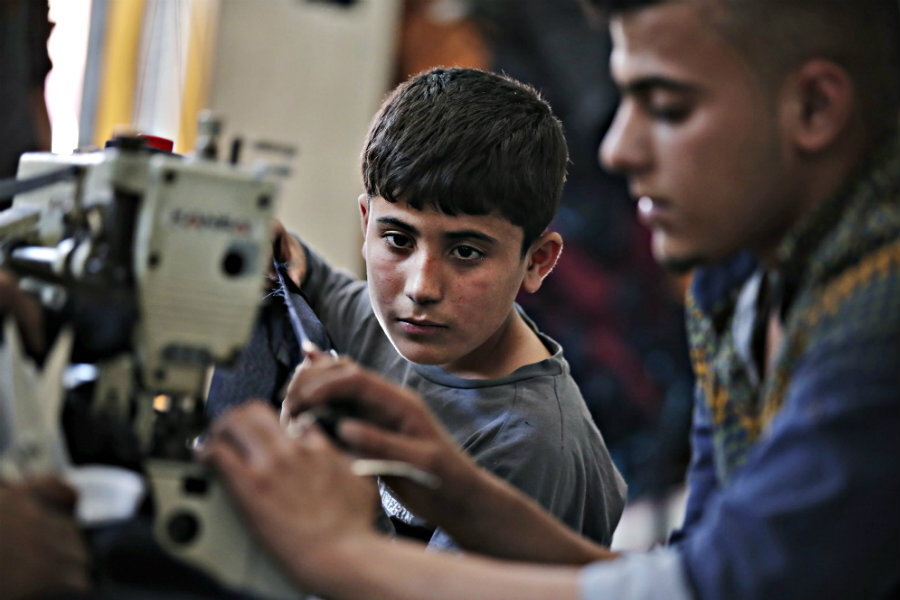Soaring numbers of unaccompanied child migrants at special risk, says UN
Loading...
Child refugees face near constant danger in their attempts to make it to Europe, according to a UNICEF report published on Tuesday. The report states that migrant children, most of whom travel without adults, face rape, death, and other "Danger Every Step of the Way," as it is titled.
One in every three people who traveled to Europe this year was a child, according to the report. Yet that number can soar far higher, depending on which route they use: 92 percent of children coming from Northern Africa to Italy this year came on their own, more than double the number who came between January and June 2015.
"These are children who have been ripped out of the context of their childhood," Brookings Institute fellow Leon Wieseltier tells The Christian Science Monitor in a phone interview.
The challenges refugee children face are manifold, according to the report. Many migrants work to make their crossing possible, leaving them vulnerable to the whims of smugglers who accept what some say is similar to slave labor in exchange for a place on a rickety boat. Other children are sexually assaulted or raped, according to the report.
"There is strong evidence that the migration crisis has been exploited by criminal human trafficking networks to target the most vulnerable, in particular women and children," the authors note.
The threats do not cease if asylum seekers arrive on European soil. Due to the snarled asylum system and packed child-protection centers, some children are wait in detention facilities or police custody as their asylum applications are processed.
Many of these refugee children are fleeing the civil war in Syria, but many others also come from countries that face turmoil or insecurity of their own, including Afghanistan, Nigeria, and Somalia, among others.
Although the UNICEF report focuses on children, female refugees face some similar threats, according to Katharina Obser, a program officer at the Women's Refugee Commission. Many flee violence, only to meet more along the way, she tells the Monitor.
"There has to be access to meaningful protections and safety," Ms. Obser says. "There need to be mental health services and safe spaces." She also emphasizes the need for maternal care, since many women are pregnant when they begin their quest for asylum.
This year, the United Nations High Commissioner for Refugees (UNHCR), the UN Refugee Agency, and UNICEF came together to create the Blue Dot system, a network of twenty outposts where children and families can receive health care, counseling, and other services – and simply a safe place to play.
"The European Union has a fairly robust framework for caring for refugee children," Susan Fratzke, an analyst at the Migration Policy Institute, tells the Monitor. "Member states follow the 'Best Interest Determination' framework, which allows countries to appoint guardians, enroll children in formal education, and other steps that they determine to be in the best interest of the child."
National governments have varied in their willingness to take children on, however. Last month, British Prime Minister David Cameron reversed his own position on refugee children, agreeing to take in an unspecified number of children. He also said that the UK would work to speed up the process of reuniting children and families who had become separated.
The UNICEF report makes specific recommendations for young refugees, including expedited asylum processes for children and protection from trafficking and exploitation. Above all, the report's authors remind readers of the Convention on the Rights of the Child, which all United Nations members, except the United States, have signed.
UNICEF itself has worked to provide services and care for children and families as they seek asylum, further monitoring the child rights situation.
"We should never forget that children on the move are first and foremost children," Marie-Pierre Poirier, UNICEF Special Coordinator for the Refugee and Migrant Crisis in Europe, writes in the report, "who bear no responsibility for their plight, and have every right to a better life."








